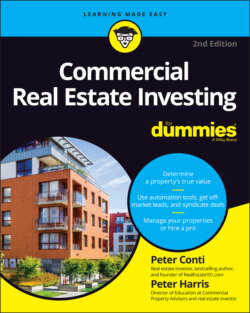Читать книгу Commercial Real Estate Investing For Dummies - Peter Harris - Страница 56
Running the Numbers on Some Properties
ОглавлениеNow that you have some basic commercial property investment terms and principles under your belt, we want to walk you through analyzing two properties. This is where it gets fun!
Be sure to follow these tips when analyzing your own retail property deal:
Look at the price per square foot. When analyzing retail, one of the first things we look at is the price per square foot. It’s an easy way to compare apples to apples and oranges to oranges. It’s also a way to get a reality check to see whether you’re paying too much for the property compared to other recent sales.
Be conservative in your number crunching. What you’ll find when you own a few retail centers is that incomes given to you by either the broker or seller are overstated, and expenses are understated. Really take a hard look at each item given and then take a conservative approach when running your numbers.
Replace your reserves. One of the most overlooked expenses when analyzing retail is the replacement reserve. Replacement reserve is an amount set aside every month to pay for property items that wear out and need to be replaced, such as roofs, siding, sidewalks, parking lots, heating/air-conditioning equipment, and so on. When these items come up for repair or replacement three to five years after you take ownership, the money has to come from somewhere — refinancing, your pockets, your partner’s pockets, or a reserve account you cleverly set up ahead of time.
Look at the parking ratio. The parking ratio for your retail center is more important than you think. The standard to begin with is four spaces per 1,000 square feet. If you don’t have enough parking, it can create a problem down the road.
Consider class. All commercial properties fall under classifications — A, B, C, or maybe even D. Class A properties are newer, have top-of-the-line features, are in the best locations, and attract the highest-quality tenants. As you go into the lower classes, location, age, and construction become less desirable. Pay attention to what class property you’re evaluating because as classes differ, so do location, price, rent, and occupancy.
Match rent rolls to estoppels. The rent roll is a list of tenant names showing what they pay in rent, in addition to when the lease agreement expires. Estoppels are letters sent to the tenant by someone other than the landlord to confirm in writing the terms of the lease, including rent amount, lease expirations, and any other options they have agreed on.Estoppels are used because the tenant may not be paying the landlord the appropriate rent (for whatever reason), or the landlord may have made a side agreement with the tenant that can’t be confirmed or enforced by new owners. When the tenant-signed estoppels are received, you can compare them to the rent rolls and actual signed leases for income verification.
Check in with your lender early. Before digging too deeply into your analysis, call up your lender and present the rent roll, the type of tenants, and financials to them. Have the lender review this deal from their perspective. Some lenders may not like certain businesses. For example, securing a loan for a shopping center with a dry cleaner or automotive repair place has been more difficult lately because of environmental concerns. Even movie theater chains and office buildings have come under scrutiny because of recent changes in the marketplace.
